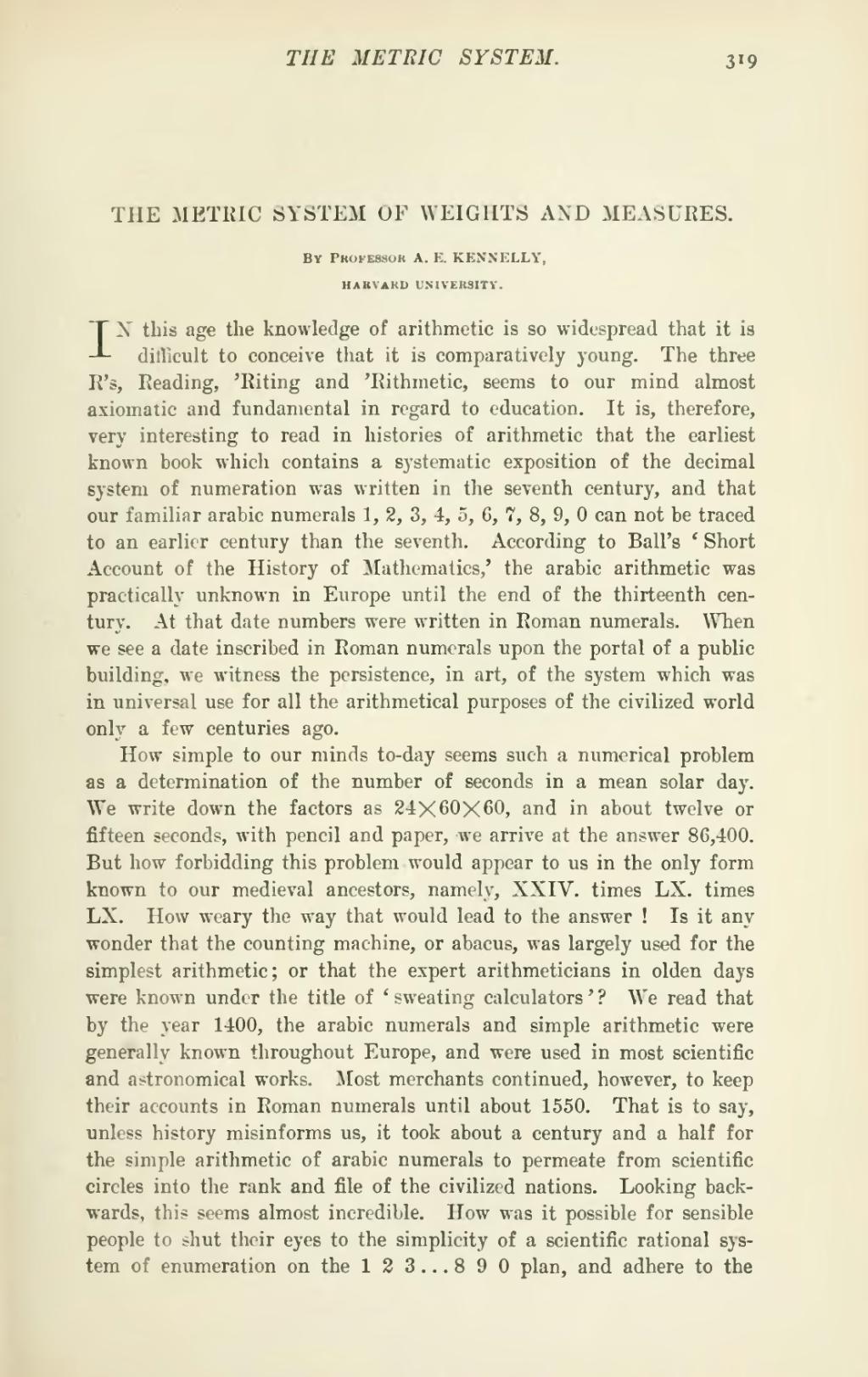| THE METRIC SYSTEM OF WEIGHTS AND MEASURES. |
By Professor A. E. KENNELLY,
HARVARD UNIVERSITY.
IN this age the knowledge of arithmetic is so widespread that it is difficult to conceive that it is comparatively young. The three R's, Reading, 'Riting and 'Rithmetic, seems to our mind almost axiomatic and fundamental in regard to education. It is, therefore, very interesting to read in histories of arithmetic that the earliest known book which contains a systematic exposition of the decimal system of numeration was written in the seventh century, and that our familiar arabic numerals 1, 2, 3, 4, 5, 6, 7, 8, 9, can not be traced to an earlier century than the seventh. According to Ball's 'Short Account of the History of Mathematics,' the arabic arithmetic was practically unknown in Europe until the end of the thirteenth century. At that date numbers were written in Roman numerals. When we see a date inscribed in Roman numerals upon the portal of a public building, we witness the persistence, in art, of the system which was in universal use for all the arithmetical purposes of the civilized world only a few centuries ago.
How simple to our minds to-day seems such a numerical problem as a determination of the number of seconds in a mean solar day. We write down the factors as , and in about twelve or fifteen seconds, with pencil and paper, we arrive at the answer 86,400. But how forbidding this problem would appear to us in the only form known to our medieval ancestors, namely, XXIV. times LX. times LX. How weary the way that would lead to the answer! Is it any wonder that the counting machine, or abacus, was largely used for the simplest arithmetic; or that the expert arithmeticians in olden days were known under the title of 'sweating calculators'? We read that by the year 1400, the arabic numerals and simple arithmetic were generally known throughout Europe, and were used in most scientific and astronomical works. Most merchants continued, however, to keep their accounts in Roman numerals until about 1550. That is to say, unless history misinforms us, it took about a century and a half for the simple arithmetic of arabic numerals to permeate from scientific circles into the rank and file of the civilized nations. Looking backwards, this seems almost incredible. How was it possible for sensible people to shut their eyes to the simplicity of a scientific rational system of enumeration on the 1 2 3. . . 8 9 plan, and adhere to the

